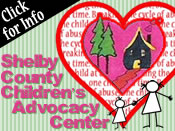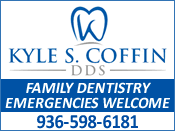March 30, 2015 - Note: This is an abbreviated version of an article from the April issue of “We the People of Shelby County” (www.shelbycountytx.com).
Since the last thirty years of the 19th century were the golden years for "opera houses" in small-town America, there is little doubt that Center had one, and possibly it was more traditional than we might think. Performing artists did tour the smaller towns, performing in tents or inside if such a venue existed.
“In the smaller towns opera houses were two-story buildings that on their lower levels housed businesses, such as millinery shops or general stores, or a local doctor's office. The performance area normally consisted of a few dressing rooms and a stage with chairs or bleachers for the audience.
“The opera house was home to a variety of entertainment, including community dances, graduations, and other civic functions and hosted traveling theatrical companies, vaudeville troops, and operatic companies. A season's entertainment could provide the community with matinee and evening performances, featuring plays recently debuted on Broadway, musical evenings with operatic selections, as well as popular songs, animal acts, pretty girls in chorus lines, and vaudeville companies offering humorous and sometimes bawdy comic relief.
“The weather affected the entertainment seasons. Winter was the time for the opera season, and citizens could dress in elegant garments and crowd into semi-heated theaters for an evening's entertainment. Summers, however, proved too warm for large indoor gatherings. During steamy summers performances were held outdoors or in tents. (Susan E. Booker, "Did They Really Sing Opera in the Opera Houses?" Encyclopedia of Oklahoma History and Culture)
We know that our late 19th-century ancestors had a need for entertainment, just as we do today, and we also know that tent shows of various types were popular here in Center. Another article in the April issue of We the People of Shelby County, "The Corner of (Old) Logansport/Shelbyville Streets," gives several examples of tent shows on the outside NW corner of the square.
In 1890 and until early in the 20th century, the building on the NE outside corner of the square (now the First Baptist Church parking lot) was a land sales office with an opera house on the second floor. This second floor later became a suite of doctor's offices over the Corner Drug Store.
Some say the opera house was in the Polley Building on the east side of the square, where Ivan Smith's bargain furniture store is now located. While I favor the first-mentioned location, little documentation exists about where it was and how it functioned except for the accompanying photograph. It probably was the largest indoor meeting place for civic events in Center (a church might be an exception) and probably had a stage for ceremonial presentations and occasional vaudeville acts.

The accompanying photograph was taken in 1900 and must have marked an event quite important at the time. Just take a look…Is that Aunt Ethel Billingsley in the middle of the second row? Uncle Tom Hughes in the rear left corner? No….Probably not. Chances are that no one will be able to identify just who are these, our 19th century ancestors, without assistance. If you do spot someone you think is an ancestor of yours, please let me know at dpswanzy@shelbycountytx.com. Then, after you try, you might check a list of those who have been previously identified in the full version of the article at www.shelbycountytx.com or on the Shelby County Historical Society web site. Maybe you will find an ancestor there!









